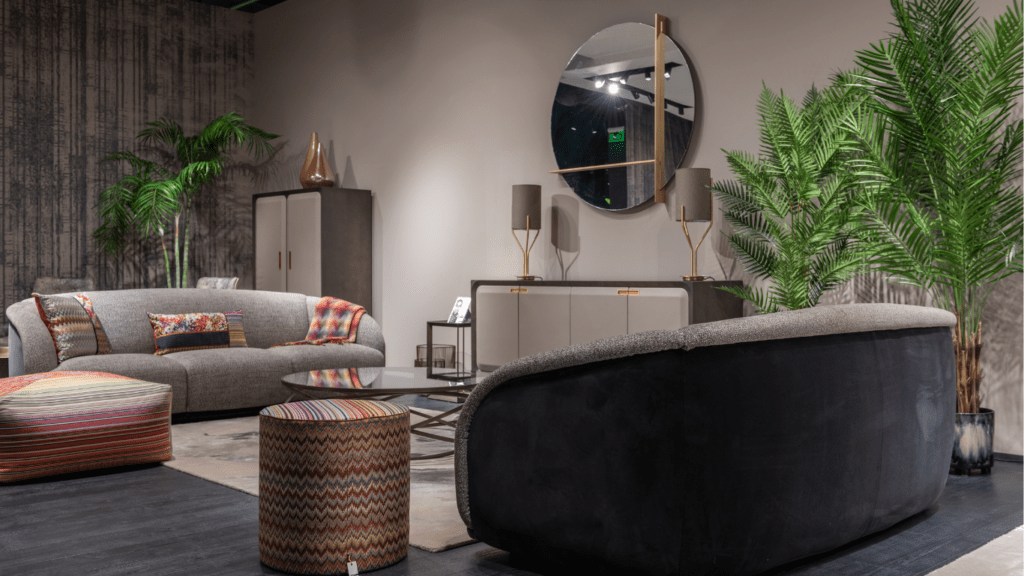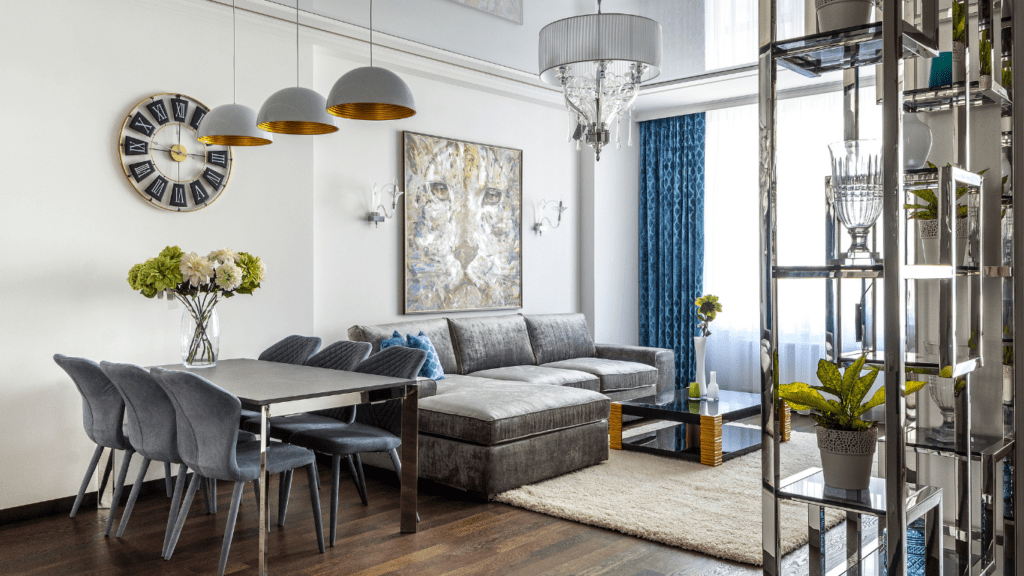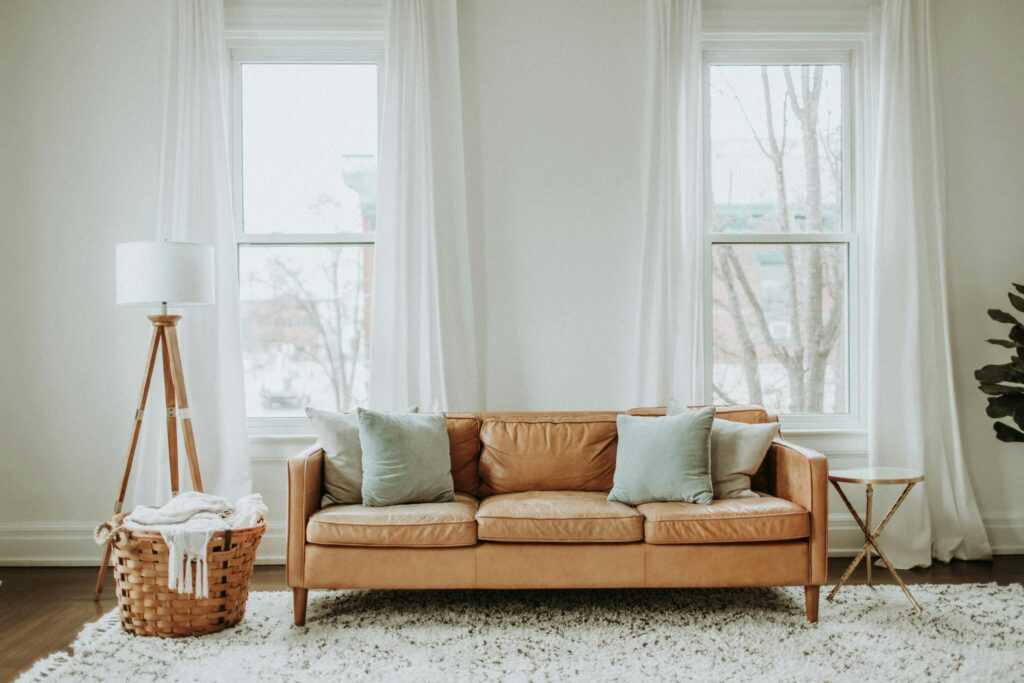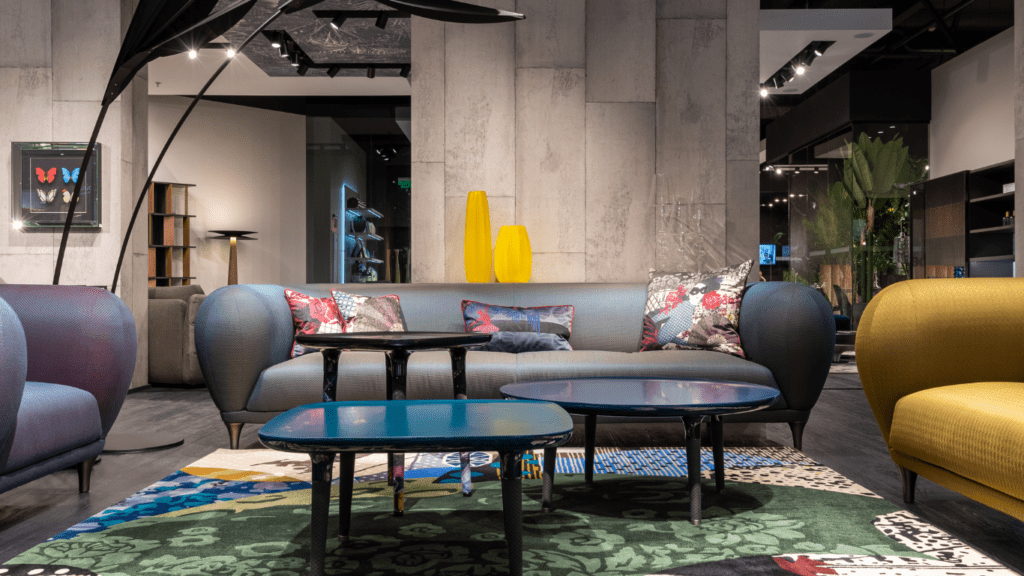Sustainability And Eco-Friendly Materials
Sustainability is central to 2024’s interior design trends. Eco-friendly materials like recycled furnishings and natural fibers are becoming mainstream.
Recycled And Upcycled Furnishings
Recycled furnishings use discarded materials to create new pieces. Items crafted from reclaimed wood, repurposed metals, and recycled plastics reduce environmental impact. For instance, tables made from old barn doors or chairs from recycled aluminum cans. By integrating these pieces, I contribute to a circular economy and support sustainable living.
Natural Textiles And Fibers
Textiles from natural sources enhance indoor environmental quality. Organic cotton, linen, and hemp are popular choices. These materials are biodegradable and have a lower carbon footprint than synthetic fabrics. Using natural fibers in upholstery, curtains, and rugs creates healthier, eco-friendly interiors. For example, a hemp rug or organic cotton drapes reflect conscious design choices.
Bold Colors And Patterns
Bold colors and patterns are making a striking comeback in 2024. This trend reflects a move toward more expressive and personalized interior spaces.
Vibrant Hues
Vibrant hues like rich blues, fiery reds, and deep greens dominate the palette. Rooms come alive with these colors, creating a sense of energy and dynamism. For example, a living room adorned with royal blue walls and accents of gold and white feels both luxurious and inviting. Using these hues thoughtfully pairs well with neutral furniture to balance the vibrancy.
Geometric Designs
Geometric designs, including hexagons, triangles, and chevrons, add visual interest and modernity to spaces. These patterns appear on wallpapers, rugs, and even furniture, creating focal points in every room. For instance, a hexagon-patterned rug can anchor a sitting area, adding depth and texture to the floor. Integrating geometric designs with bold colors crafts a cohesive yet dynamic look, appealing to those favoring contemporary styles.
Multifunctional Spaces

Interior design in 2024 emphasizes the creation of multifunctional spaces to accommodate diverse needs in modern living environments. Adapting rooms to serve multiple purposes maximizes utility and enhances convenience.
Flexible Furniture
Furniture designed with versatility in mind allows spaces to be reconfigured without much hassle. Sofas that convert into beds, coffee tables that lift to become dining tables, and modular shelving units exemplify this trend. For instance, a sleeper sofa in the living room can transform the space into a guest bedroom when required in seconds. Modular systems also let individuals customize storage solutions, adapting to different room sizes and needs.
Space Optimization Techniques
- Effective space optimization techniques in interior design ensure efficient use of available areas, especially in smaller homes and apartments.
- Built-in cabinets, under-stair storage, and wall-mounted desks help create functional spaces without clutter.
- Utilizing vertical space through stacked shelving and hanging organizers maximizes room usability.
- In kitchens, pull-out countertops and collapsible dining areas offer additional workspace and seating options only when needed, maintaining a clean and spacious environment in their absence.
Smart Home Integration
Advancements in technology have significantly influenced interior design, making smart home integration a key trend for 2024. Seamlessly blending tech with design, these systems increase convenience and elevate the living experience.
Advanced Lighting Solutions
Smart lighting systems offer customizable and energy-efficient solutions perfect for modern interiors. I recommend using systems like Philips Hue and LIFX for their versatility in adjusting brightness and color temperature through smartphone apps. Integrating motion sensors ensures lights activate as you enter a room. This not only saves energy but adds a layer of convenience. Additionally, voice-controlled options via Amazon Alexa or Google Assistant allow hands-free operation, further enhancing comfort and efficiency.
Automated Climate Control
Smart thermostats such as Nest and Ecobee provide precise climate control, adjusting temperature based on your preferences and routines. I suggest pairing these thermostats with smart sensors placed in various rooms to monitor temperature and humidity levels. This setup ensures optimal comfort and energy efficiency, particularly important in diverse climates. Automated blinds and curtains can also be integrated to adjust according to the time of day, blocking or allowing sunlight to maintain ideal indoor conditions without manual intervention.
Nature-Inspired Interiors
Nature-inspired interiors emphasize bringing elements of the outdoors inside, creating a calming and rejuvenating atmosphere. This trend prioritizes natural materials, earthy color palettes, and biophilic design principles.
Biophilic Design Elements
Biophilic design inherits its principles from the natural world, fundamentally impacting the way we connect with our living spaces. I often incorporate living walls in my designs, using a variety of plants to promote air quality and offer a visual connection to nature. Natural light, another crucial element, floods rooms through large windows or skylights, reducing the need for artificial lighting and improving mood. Water features, like indoor fountains or aquariums, can also be introduced to create a serene ambiance. By integrating natural forms and textures such as wooden beams, stone surfaces, and woven fabrics, I create spaces that feel organic and welcoming.
Earthy Color Palettes
Earthy color palettes define nature-inspired interiors, grounding the space and invoking a sense of tranquility. In my projects, I use shades of brown, green, and beige to reflect the natural environment. Terracotta, olive green, and soft taupe can dominate walls or feature in accents like:
- cushions
- rugs
- artwork
These colors not only create a warm and inviting atmosphere but also enhance other natural elements within the space. By borrowing hues directly from nature, I ensure the design feels cohesive and inherently relaxing.
Artisan And Handcrafted Accents
Artisan and handcrafted accents are gaining traction in 2024, adding a unique, personal touch to interior spaces. These elements showcase individual craftsmanship and offer a one-of-a-kind aesthetic.
Unique Handmade Decor
Handmade decor stands out with its detailed craftsmanship and bespoke nature. Items like handwoven rugs, pottery, and custom furniture pieces capture the artisan’s skill, making each piece unique. Incorporating these elements into a room adds character and a sense of exclusivity. For instance, hand-painted tiles or artisanal light fixtures can transform a bland space into a vibrant and distinctive area. These handcrafted accents not only provide aesthetic value but also support local artisans and sustainable practices.
Cultural Influences
Cultural influences enrich interiors by incorporating traditional crafts from various regions. Designs inspired by Moroccan, Japanese, and Scandinavian cultures have become particularly popular. Moroccan tiles, known for their intricate patterns, bring a touch of exotic elegance. Japanese pottery and textiles, with their minimalist and refined qualities, add a calming and sophisticated vibe. Scandinavian handcrafted woodwork exemplifies functionality and simplicity, contributing to a warm and inviting atmosphere. These culturally influenced pieces create a globally inspired environment, blending various design traditions into a cohesive and harmonious space.



 Smart Home Technology Consultant
Meagan Kanedooray serves as Luxe House Maker’s smart home technology consultant, with extensive experience in integrating advanced tech into luxury homes. Specializing in home automation, security systems, and energy-efficient solutions, Meagan helps readers transform their living spaces into seamless, tech-enabled environments. Her expertise in cutting-edge technologies ensures that Luxe House Maker’s audience stays informed about the latest innovations that enhance convenience, safety, and sustainability in luxury living. Meagan’s deep understanding of smart home trends makes her an invaluable resource for those looking to elevate their homes with the latest advancements in technology.
Smart Home Technology Consultant
Meagan Kanedooray serves as Luxe House Maker’s smart home technology consultant, with extensive experience in integrating advanced tech into luxury homes. Specializing in home automation, security systems, and energy-efficient solutions, Meagan helps readers transform their living spaces into seamless, tech-enabled environments. Her expertise in cutting-edge technologies ensures that Luxe House Maker’s audience stays informed about the latest innovations that enhance convenience, safety, and sustainability in luxury living. Meagan’s deep understanding of smart home trends makes her an invaluable resource for those looking to elevate their homes with the latest advancements in technology.
